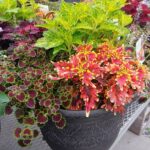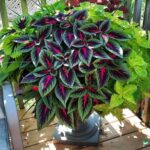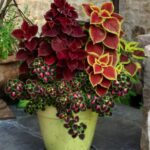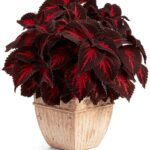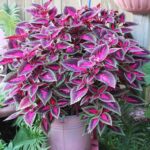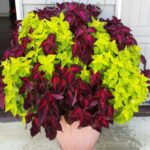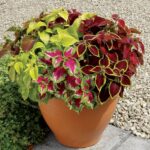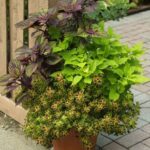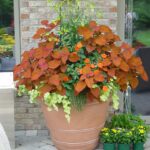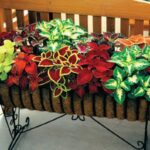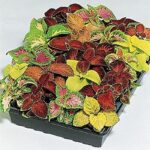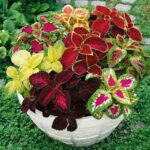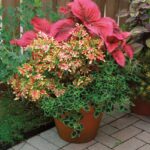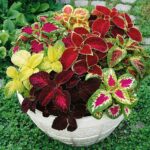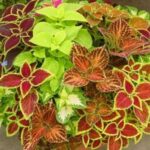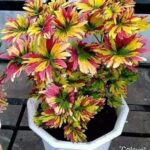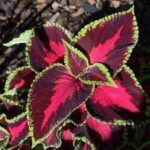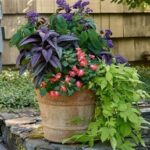If you’re having trouble finding the right plant for the right place, this versatile performer offers a wealth of options
snakes who have yet to discover coleus (Solenostemon scutellarioides cvs., USDA Hardiness Zone 11) are missing out on the staggering number of opportunities they offer. Whether grown in pots or in the ground, used as specimen plants or as partners in a combination, these multicolored beauties perform like nothing else in the garden. Don’t let their luscious colors stop you from taking advantage of their other design features: Coleus come in a variety of shapes and sizes from trailing varieties to large bushy mounds. From vibrant splashes of color to flowing curves of texture, look no further for the secret ingredient to complete your garden masterpiece.
The following examples show several ways to use coleus. However, any number of plant combinations can be created with their kaleidoscope of colors and other elements. Use the basic principles of each technique to create your own designs, or follow the examples provided here.
.
They are annuals — sort of. Coleus, which is considered hardy in zone 11, is grown as an annual in all other zones. Varieties can be found for full sun to almost full shade, depending on color and selection.
Soil is not a problem, but drainage is. Coleus grows readily in rich to poor soils – ranging from peaty sand to rocky clay – but prefers moist, well-drained soil. Dry soil will result in wilting. One problem they won’t recover from is root rot, so don’t grow them in poorly drained areas.
Steady watering and feeding is best. Coleus require average amounts of water. A thirsty coleus will wilt dramatically in dry soil and low humidity, but it will recover quickly after being watered. Although they can handle occasional fertilizing, coleus prefer more frequent feedings and will reward you with larger, more lush plants.
They like a good pinch. Many coleus benefit from gently removing their flower spikes (and a set or two of the leaves below them) before they extend and bloom. Pinching encourages branching and denser growth for a fuller, less spindly plant. It also saves energy for foliage you want, not spikes and trailing you don’t. Scissors, pruners, and your own thumb and index finger all work quite well. However, you can stop pinching a month or so before your normal frost date: You deserve a rest after your diligence, and some selections (like ‘Sedona’ and ‘Odalisque’) may surprise you with their cheerful, bright blue flowers.
1. Use it as an enticing focal point
‘Freckles’ coleus, ‘Prince’ purple fountain grass, ‘Fancy’ blue fan flower, ‘Flamingo’ coleus
Simply put, a focal point is an element in a composition (such as a painting or a garden area) that draws attention to itself and the area around it. It can lead your eye to a distant point and make a garden seem larger, or it can divert your attention from an uninteresting or even unattractive feature, such as a plain mass of bushes or a utility pole. The visual impact of a focal point is magnified when placed against a solid color or contrasting background.
In this case, the dark, arching leaves of purple fountain grass allow the splash of chartreuse and dark orange on the rounded mass of ‘Freckles’ to stand out from the rest of the bunch, creating a focal point. While the hanging clusters of blue fan flowers provide an energetic color contrast, there aren’t enough of them to overwhelm the star of the show. An emerald green pot completes the look, its dark, even tone fading into the background and allowing the plant combination to pop.
2. Create an eye-catching topiary
With some special attention, a coleus can be easily and quickly trained into a striking topiary. A standard (“ball on a stick”) coleus topiary will elevate a planting to a new level of excitement, especially when the same selection mirrors it in the ground or in a potted specimen. Also keep in mind that a potted plant is often easier to carry – and therefore more versatile – than a planted one.
The color, shape and height differences between the mass planting and the confident round topiary head of the Lancelot Velvet Mocha™ coleus put an exclamation point on this border. Notice how the rich maroon foliage contrasts with the golden ‘Sunflake Gold’ butter daisy and subtly interacts with the green ‘Hicksii’ yew.
3. Echo other elements in a combination
A coleus does not always require the main role in a composition. Sometimes, like a good supporting character, it echoes the colors and other elements of a combination, helping to tie everything together. Let the colors of a coleus play off the same colors in other plants, and don’t forget to use line, shape and texture as supporting elements.
Although relatively small, the bright yellow flower clusters and variegated foliage of ‘Samantha’ lantana jump out as the focal point. The bold, pointy leaves of the trailing sweet potato vine ‘Sweet Caroline Bronze’ add another eye-catching feature without distracting from the lantana. Now look closely at the exuberant ‘Smallwood’s Driveway’ coleus: Its mass of foliage echoes the yellow and green of the lantana as well as the bronze and chartreuse of the sweet potato vine, subtly unifying the entire planting.
4. Contrast and connect with other plants
Color usually makes the first impression and often dominates a composition, but don’t forget the importance of its interplay with line, shape and texture. Line leads the eye from one area to another and ties together a planting – for example, when a plant seems to explode upwards and outwards, drawing the eye in those directions. Shape provides a sense of placement in space and can also suggest emotion, such as the strength of a triangular shape or the comfort of a smooth, round sphere. Texture is the perception of roughness or fineness and the variation in both dimension and tactile sensation. Large plants with a few large spaces appear rough, while smaller, more linear parts, such as in a fern, indicate fine structure. Coleus provide all four design elements in abundance and therefore make excellent choices for memorable container plantings.
In this planting, note how the almost black center of ‘Inky Fingers’ picks up the dark tones of ‘Red Sensation’ cordyline, while the green edges of the coleus echo the variegated palm sedge. The gently curved mass of coarser coleus contrasts sharply with its distinctly linear, more open, finer companions, and the whole mass of plants stands out against the plain orange pot and the dusty miller ‘Colchester White’ in the background.
 Flower Love
Flower Love

